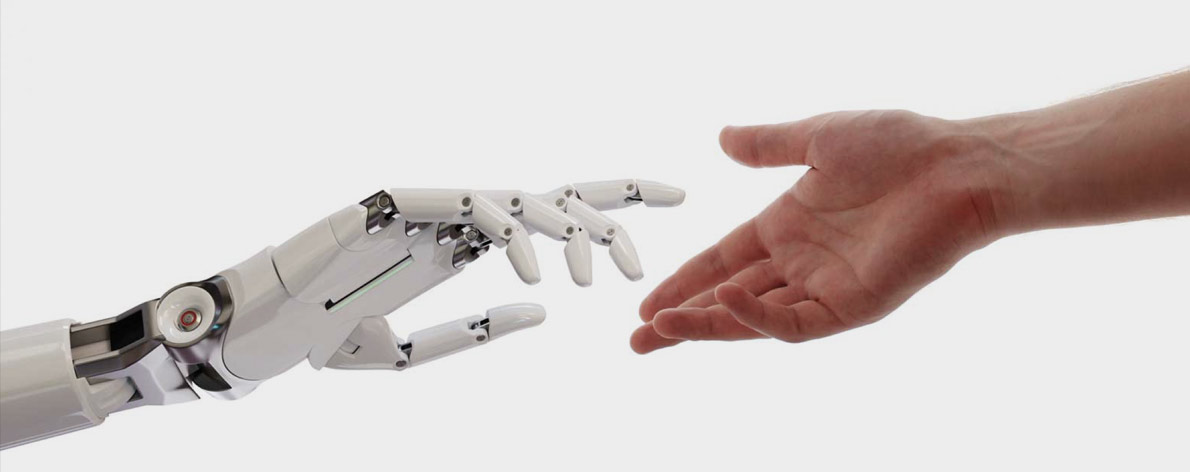
“While Ai will radically alter how work gets done and who does it, the technology’s larger impact will be in complementing and augmenting human capabilities, not replacing them.”
– Harvard Business Review, 10 Must Reads 2020, Collaborative Intelligence
The Partnership Approach
It’s not hard to find dire sounding opinions on Artificial Intelligence. Some of our brightest minds, from Stephen Hawking to Elon Musk, have been raising the alarm about worst case scenarios for years. The concern is that, more or less, the machines are coming to take over. However, and with all due respect, we’ll take the other side of that bet. Our belief isn’t that the future of AI will be contentious, rather, it will be collaborative.
We’ve witnessed every step of the technological revolution in eDiscovery. Our roots as an organization go all the way back to the dark ages, where actual physical documents were copied by hand. We’ve seen multiple phases of computer advancement: From early algorithms like nearest-neighbor and linear regression to more advanced Continuous Active Learning models and technology-assisted review (TAR). When advanced AI came along, we embraced that too. We’ve been in the trenches, using and testing the latest AI developments in real world scenarios, for years. We can say that from our experience, and without a doubt, the best application of AI in eDiscovery is collaborative. The best results come from an expert user who knows what tools to use and when to use them.
A Little History
It’s no secret that AI was born out of chess. The famous 1997 rematch between world champion Garry Kasparov and IBM’s Deep Blue supercomputer was billed as “Man vs Machine.” When Kasparov lost that match, the first ever world champion to be bested by a computer, many began to worry that the end of human intelligence was near. Yet that worry goes back much farther than the 1990s. In the 18th century, the notorious Mechanical Turk Automaton made the rounds of European salons besting one human chess player after another. It provoked both excitement and fear. But it was all an illusion – there was a human inside the machine all along. We believe this story still acts as a kind of parable for the future of AI.
For while it is true that Kasparov lost to Deep Blue, the AI race in chess was just beginning. Kasparov himself began to champion what he called Centaur Chess, or Advanced Chess. Rather than play against the machine, he started to play with it. As it turned out, this was a winning combination. The collaboration “produces a force that plays better chess than either humans or computers can manage on their own”. Right from the beginning of the AI revolution, a combination of human and AI was better than either in isolation. Over twenty years later, and even with exponential growth in the capabilities of AI, this is still the case. A combination of man and machine can still beat the best example of either.
Where Are We Now?
A recent article in the Wall Street Journal sums up the current situation. Google AI Beats Doctors at Breast Cancer Detection—Sometimes. The article takes a fairly typical approach of comparing the performance of man vs machine, noting that in some cases the AI performed better, and in others the doctors outperformed. Obviously, neither was perfect. “While the AI system caught cancers that the radiologists missed, the radiologists in both the U.K. and the U.S. caught cancers that the AI system missed. Sometimes, all six U.S. readers caught a cancer that slipped past the AI, and vice versa.” In our experience, these findings are predictable. We know that neither humans nor AI are perfect. But here is the key: When a combined approach to screening was used, “the study found that the model could potentially reduce workload by 88%.” Let that sink in. An eighty-eight percent increase in medical efficiency. Now that’s teamwork.
Here again is Wilson & Daugerty from The Harvard Business Review. “In our research involving 1,500 companies, we found that firms achieve the most significant performance improvements when humans and machines work together. Through such collaborative intelligence, humans and AI actively enhance each other’s complementary strengths: the leadership, teamwork, creativity, and social skills of the former, and the speed, scalability, and quantitative capabilities of the latter.”
This is exactly right, and it’s exactly what we’ve seen proven in eDiscovery. Jaclyn Schoen, our President of AI, explains: “The efficiency of an attorney equipped with Ai is unparalleled. And it’s really the combination of human and artificial intelligence that matters. Using this approach we can find key documents faster, we can code far fewer documents manually, and by presorting data we can make the entire review process that follows more efficient, around 30% more efficient.”
It’s no secret that document review is the most expensive and labor intensive aspect of discovery. That 30% increase in efficiency across each and every reviewer on a project can equate to hundreds of thousands of dollars in savings on a single matter. We think that’s the kind of teamwork everyone can agree on.
What’s Next?
What does all this mean for the legal industry? Well the good news is that lawyers are not going anywhere. It’s our view that far from replacing attorneys, AI will actually enhance their capabilities and make them more essential. By using AI, law firms will now have the ability to radically increase their efficiency and offer a more strategic, higher-level approach to certain services. By working with AI, it will allow attorneys to do what they do best: Work with clients, develop strategy, and practice law.
For firms like ours, it means game-on. One of our core principles at Trustpoint is that in a technology-laden world, it is people that really make the difference.

